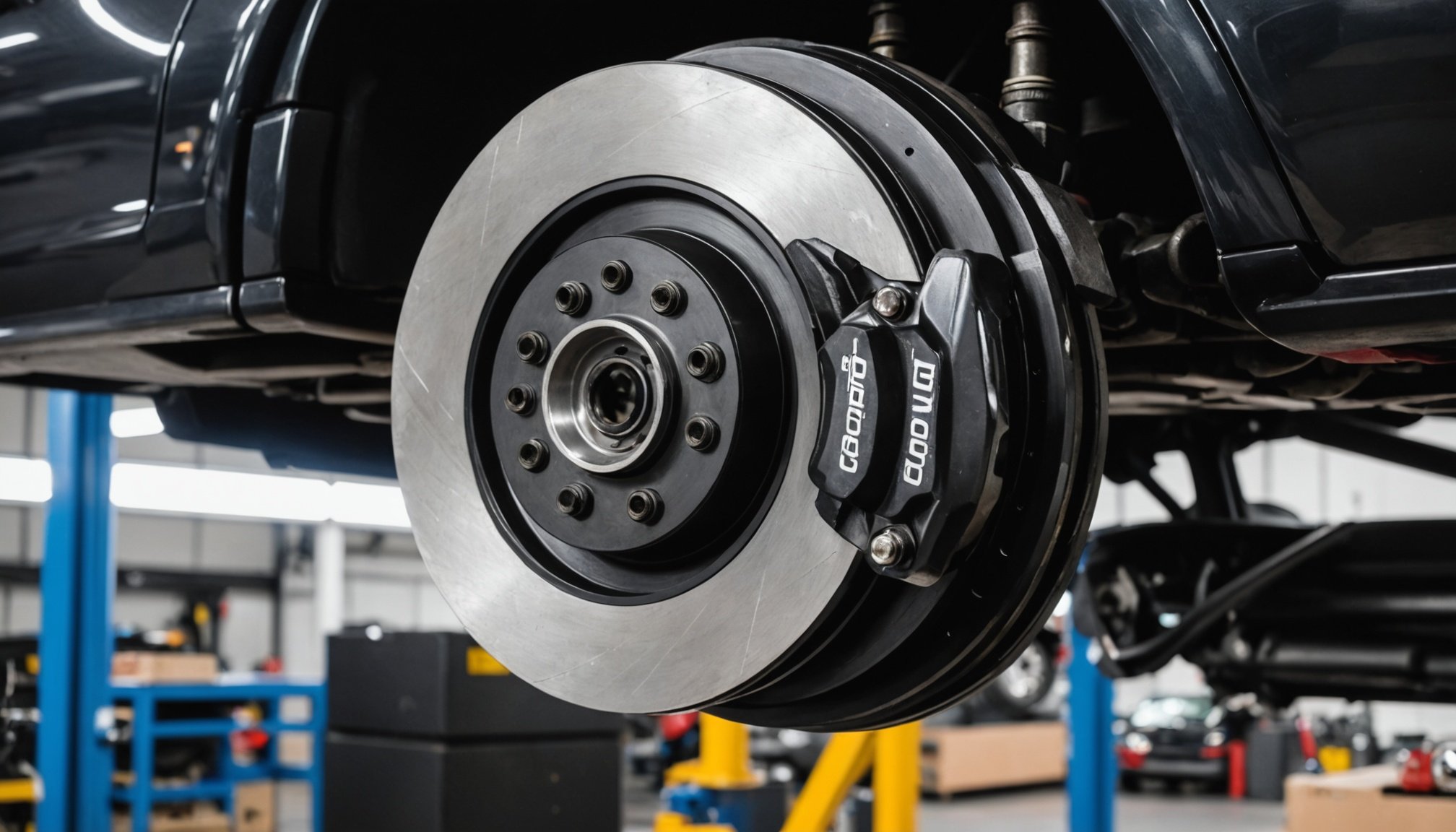Overview of Toyota Celica Brake Performance
Brake performance is crucial for the safety and handling of any vehicle, including the Toyota Celica. The factory Toyota Celica brakes are designed to meet basic safety and regulatory standards. They provide adequate stopping power under normal driving conditions. However, the system’s layout and components, including discs, pads, and hydraulic calipers, have limitations, especially under demanding conditions like high-speed driving or towing.
Recognising when it’s time for a braking system upgrade can greatly enhance performance. Key signs that indicate it’s beneficial to consider this include:
Topic to read : Transform your bmw 3 series: the comprehensive guide to installing adaptive headlights for superior night vision
- Increased stopping distances despite healthy components.
- A spongy or less-responsive brake pedal.
- Visible wear or corrosion on brake components.
Additionally, experiencing brake fade, particularly after consecutive stops, is another red flag. Upgrading the braking system, overhauling with more robust components or performance-enhanced parts, can drastically improve the Celica’s braking capability. This move significantly elevates safety levels and can offer a more confident driving experience.
By addressing these potential issues head-on, owners of the Toyota Celica are empowered to make informed decisions about their vehicle’s braking performance and overall safety.
Also read : Ultimate guide to replacing your land rover discovery”s alternator for peak performance
Understanding Front Calipers
Front calipers play a pivotal role in the braking system. They squeeze the brake pads against the brake rotor to create friction, which slows down or stops the vehicle. This frictional process is essential for the overall brake performance, especially in vehicles like the Toyota Celica.
Types of Front Calipers
Understanding the types of calipers can aid in selecting the right ones for your needs. Calipers typically come in two main types: single-piston and dual-piston. Single-piston calipers are more common in standard vehicles due to their simplicity and cost-effectiveness. They use one piston to press the brake pad against the rotor. Dual-piston calipers, on the other hand, utilise two pistons, providing more even pressure distribution for enhanced stopping power.
Materials and Impact on Performance
The construction material of calipers significantly impacts their durability and performance. Common materials include aluminium and cast iron. Aluminium calipers are lightweight, offering better heat dissipation—a critical factor in reducing brake fade. Cast iron is more robust but heavier, offering durability at the cost of added weight, which may affect performance dynamics in a vehicle like the Celica. Understanding these aspects can guide successful braking system upgrades.
Benefits of Upgrading Front Calipers
Upgrading your front calipers on the Toyota Celica can lead to notable improvements in brake performance. One of the primary advantages is enhanced stopping power. This upgrade ensures shorter braking distances, especially crucial during high-speed driving or emergency situations. Enhanced calipers exert more even pressure across the brake pads, optimising the stopping force.
Another significant benefit is improved heat dissipation, which leads to reduced brake fade. High-performance calipers often incorporate materials like aluminium, which efficiently dissipate heat, maintaining consistent performance despite demanding use. This is particularly relevant in high-speed scenarios where brakes may be applied frequently and vigorously.
Upgraded calipers also provide greater consistency in performance across varying conditions. Whether on dry roads or in wet weather, superior calipers tend to deliver a predictable braking response. This consistency bolsters driver confidence and increases safety.
In essence, opting for a caliper upgrade enhances overall vehicle handling, equipping your Toyota Celica with better braking capabilities suited to both routine driving and extreme situations. Investing in caliper upgrades not only supports safety but also complements other performance enhancements, contributing to a more controlled driving experience.
Aftermarket Caliper Options for Toyota Celica
For owners seeking to enhance their Toyota Celica’s braking performance, aftermarket calipers present numerous options. A vast array of respectable brands, such as Brembo and EBC Brakes, offer reliable performance calipers specifically designed with the Toyota Celica in mind. These calipers often feature superior components and engineering, leading to improved brake response.
When choosing aftermarket calipers, it’s crucial to consider factors like material quality, piston configuration, and overall design. For example, many aftermarket options utilize aluminium for its lightweight and heat dissipation properties, crucial for maintaining brake integrity and reducing fade under stress. Moreover, dual-piston calipers provide balanced pressure application, enhancing stopping power over single-piston designs.
In comparing caliper options, key performance metrics to evaluate include brake pedal feel, stopping distance, and durability under prolonged use. User reviews and expert analyses often rank Brembo high for its robust construction and reliable performance in various driving conditions.
Recommendations often highlight the need to align aftermarket choices with specific driving needs. Whether focusing on track use or city driving, selecting the proper caliper can offer significant performance enhancements without compromising the Toyota Celica’s handling or safety. Such thoughtful customisation ensures optimal braking performance tailored to individual driving styles.
Installation Guide for Front Calipers
Enhancing the braking performance of your Toyota Celica with new front calipers requires careful installation. A step-by-step understanding of the caliper installation process is crucial.
Begin by safely lifting the vehicle and securing it on jack stands. Remove the wheel to expose the brake assembly. Ensure you have appropriate tools, such as a set of spanners, a brake piston compacting tool, and new calipers and pads.
Installation Steps
- Remove the old caliper by loosening the bolts and carefully detaching it from the brake assembly. Avoid damaging the brake line during removal.
- Once removed, use a brake piston tool to retract the brake pistons fully. This will make it easier to fit the new caliper.
- Align the new caliper and secure it with bolts. Ensure the brake line is properly connected to prevent leaks.
- Reattach the brake pads and wheel, then lower the vehicle.
Common Challenges
Ensuring no air enters the brake lines is critical. Bleeding the brakes after installation guarantees optimal brake performance and safety. Adjusting to new components can be tricky, but these systematic steps ensure a smooth DIY caliper replacement on your Toyota Celica, enhancing both its performance and safety.
Safety Precautions During Installation
When it comes to caliper installation, ensuring safety should be your utmost priority. Handling brake components requires care, as any oversight could compromise vehicle safety and performance. Always work in a clean, well-lit environment and ensure the car is securely supported on jack stands to prevent an accidental fall.
Wearing appropriate protective gear is crucial. This includes safety gloves to protect your hands from sharp edges or chemicals, and safety goggles to shield your eyes from potential splashes or debris. A dust mask is advisable when dealing with brake dust.
Use only tools that are well-maintained and designed for automotive work, such as a caliper piston tool and a proper wrench set. This not only aids in accurate fitting but also prevents inadvertent damage to new or existing parts.
Make sure all components are firmly secured once installed. A loose brake caliper can lead to poor braking performance or, in the worst case, brake failure. After installation, carefully bleed the brakes to remove air from the lines, ensuring optimal braking effectiveness.
By adhering to these safety guidelines, you ensure that your brake system upgrade enhances both performance and safety of your Toyota Celica.
Compatibility Issues and Considerations
When upgrading aftermarket calipers for your Toyota Celica, understanding caliper compatibility is vital. Each Celica model may have subtle differences affecting fitment, so ensuring that your chosen calipers match your car’s specific needs is crucial.
Fitment Factors
Several factors influence the fitment of aftermarket calipers. These include the rotor size, the bracket mounting configuration, and the wheel’s spoke design. Careful measurements and cross-referencing are required to ensure the performance calipers will physically fit on your vehicle without interference.
Model Specifics
Different Toyota Celica models may have variances in bodywork or factory components affecting compatibility. It’s crucial to consult the vehicle’s manufacturer specifications or an experienced specialist. This step confirms that the selected aftermarket calipers support existing brake systems and are reliable for the intended Celica version.
Manufacturer Guidance
Relying on manufacturer specifications is a prudent measure before making a purchase. They provide detailed guidance on caliper compatibility with various Toyota Celica models. This is indispensable for ensuring that your brake upgrade delivers the expected performance enhancements without unforeseen complications.
Engaging with experienced professionals or online forums specific to Celica owners can provide valuable insights into successful aftermarket fitment and lead to more informed decision-making.
Visual Aids and Resources
Visual aids can significantly enhance your understanding of caliper installation on your Toyota Celica. High-quality instructional videos provide step-by-step overviews, making complex tasks more accessible. Watching a seasoned professional handle the installation steps offers invaluable insights and avoids common pitfalls. Videos from reputable automotive channels can assist you in identifying essential tools and techniques, whether you’re embarking on a full caliper replacement or addressing specific challenges.
Diagrams are another vital resource—they offer a clearer view of the brake system’s layout. These illustrations help identify how each component fits together, ensuring you avoid misalignment. A detailed diagram can act as a visual reference guide throughout the installation process, reinforcing the proper sequence of steps.
When searching for instructional material, focus on videos that showcase Toyota Celica-specific guidance. This ensures that any unique model requirements or quirks are addressed, preventing trial-and-error frustrations. Furthermore, engaging with online resources and forums offers direct access to community advice, tips, and product reviews.
Keep these supplementary materials handy to facilitate a smoother, more informed installation experience. They can empower you to undertake DIY replacements with enhanced confidence and competence.











